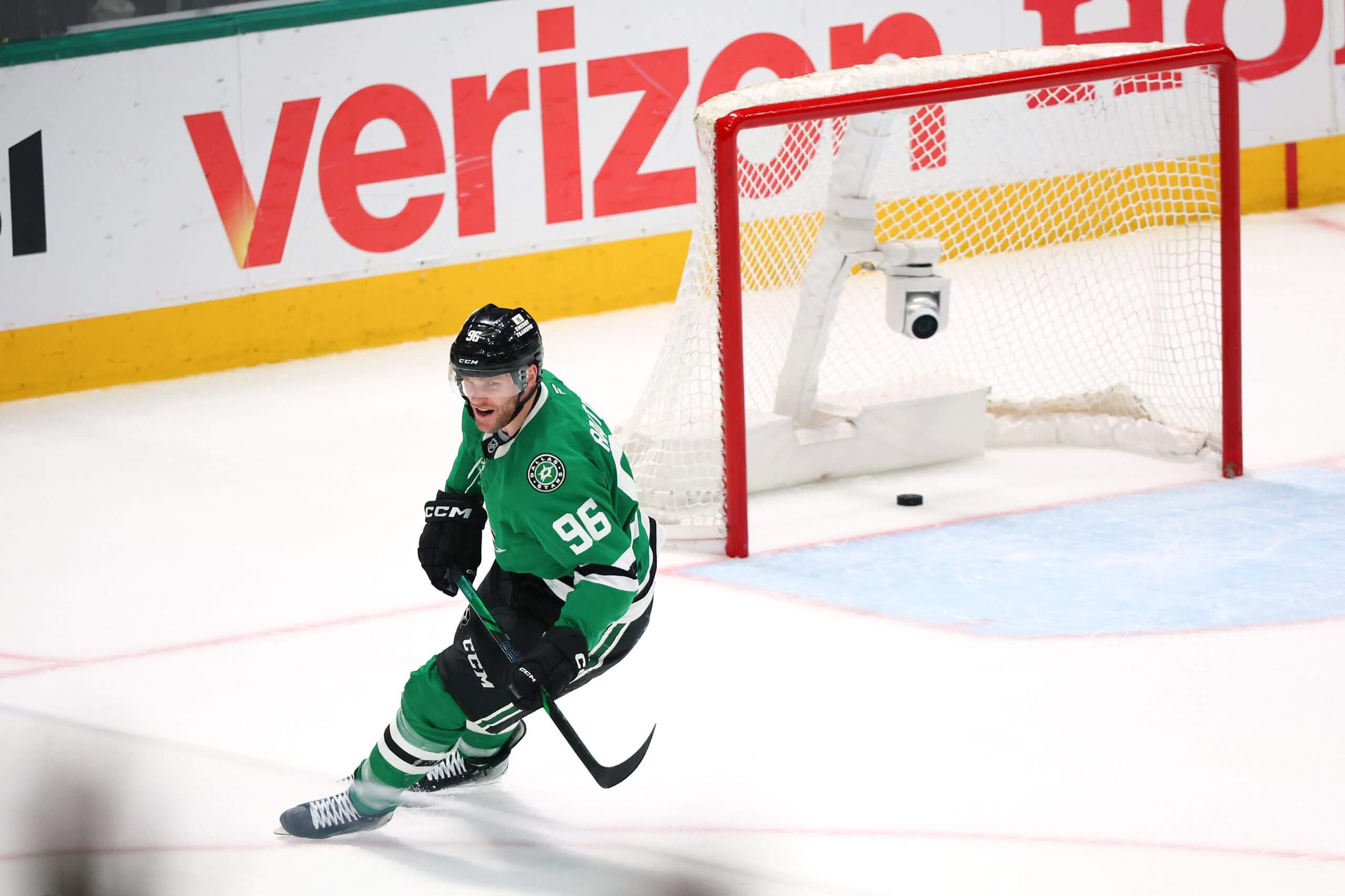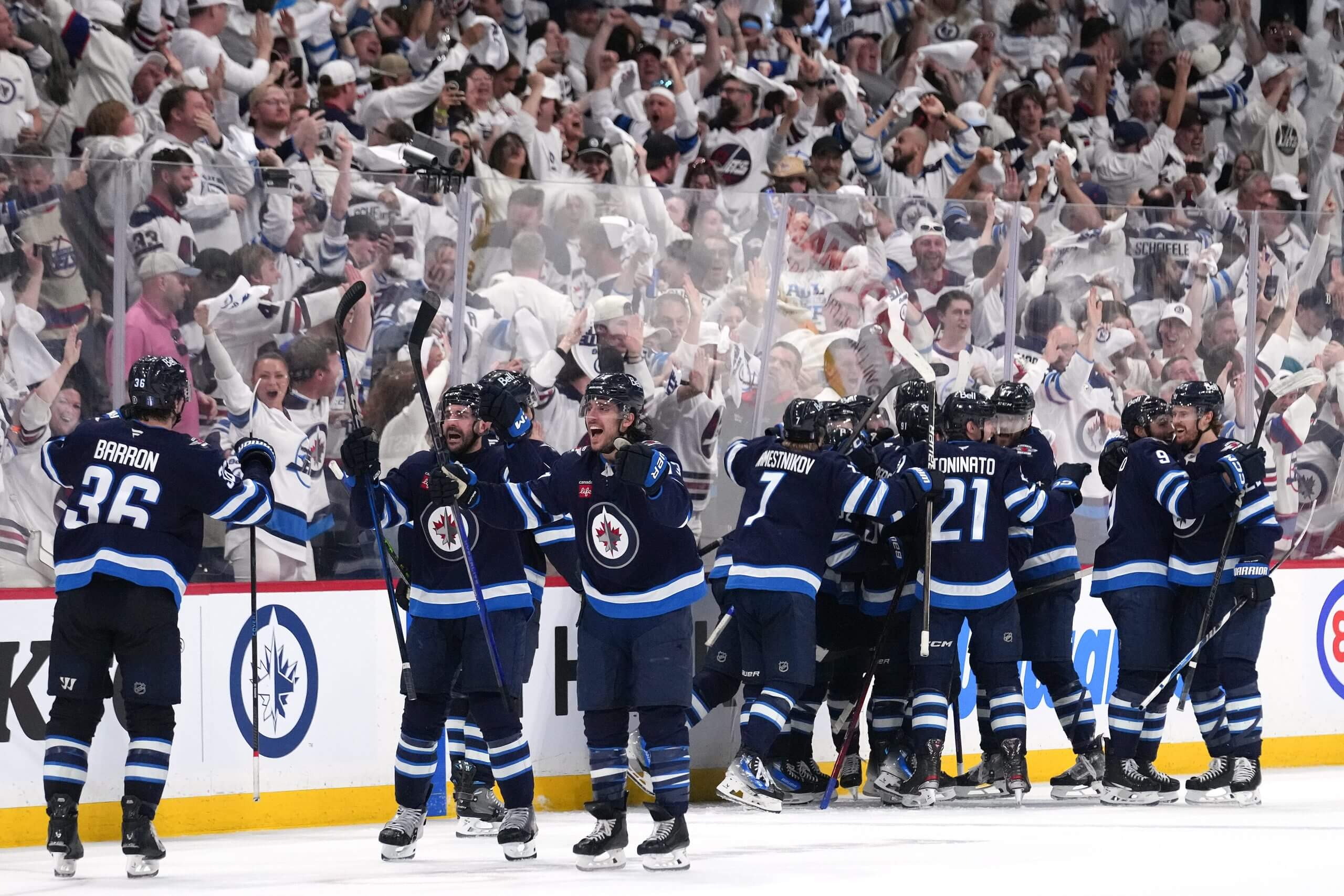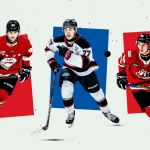
By Sean McIndoe, Sean Gentille and Shayna Goldman
Welcome to Rules Court, the feature in which you send in your proposals for NHL rule changes and three of us vote on them. Convince at least two of us, and your rule is passed.
This is, by my count, the ninth edition of this feature. Over the years, we’ve changed everything from the salary cap to replay review to the playoff format, in some cases multiple times. We’ve also made it so that coaches have to walk across the ice to serve bench minors. We’re really doing the Lord’s work, is what I’m trying to say.
Advertisement
Today we’re back with seven new suggestions sent in by readers. They’ll be reviewed by Sean, Other Sean and Shayna (aka Almost Sean). Will any get the required YES votes to be passed into the NHL rulebook? Let’s find out…
Note: Submitted questions have been edited for clarity and style.
Once a team pulls its goalie from the ice for a sixth attacker, all icing should be waived off. This would allow the defense to take unlimited shots at the open net without icing being called. Additionally, you’d get some fierce skating races to try and get possession of the puck after it was shot at the open net. — A.J. F.
McIndoe: I don’t love it. Yes, you’d get unlimited shots at the empty net. But you’d also make things far easier on the defending team, and eliminate a bunch of the dramatic offensive-zone faceoffs. Empty-net goals are fun, but tying goals are way more fun, and this change would mean fewer of those. Put me down for a NO.
(Bonus side rant: More rink-wide shots would just mean more TV directors doing that awful “switch to the camera inside the net” thing that they still think is fascinating even though all it does is break the visual flow of a key moment. Stop doing this!)
Gentille: Defending players having to decide whether to go for the empty net or risk the icing is one of my favorite parts of six-on-five play. Also, I like tying goals, and this one would guarantee some kind of catastrophic injury in those puck races. NO.
Goldman: Yep, Sean 2’s take here drives home the argument against this — the risk versus reward of shooting the puck down the ice is an exciting element of six-on-five play and helps show different coaching tactics. Plus, it takes away the one advantage a short-handed team has in those empty-net situations. NO.
If you have pulled your goalie and are at six-on-five, if you ice the puck, you cannot put your goalie back in. You’ll see a lot more teams being careful breaking the puck out six-on-five to avoid a defensive-zone faceoff without a goalie. As far as I’m concerned, being able to put your goalie back in is a line change and shouldn’t be allowed. — Brad K.
McIndoe: Brad, I can assure you that you’re not alone here. This one comes up a lot. It really seems to bother a lot of hockey fans that the “no subs on an icing” rule doesn’t apply to a pulled goalie. But do we really want to see teams winning faceoffs and immediately scoring into empty nets? Like the first suggestion, this just seems like a way to tilt the ice in favor of the team that’s leading and make life harder for the team trying to come back. Just in terms of entertainment value, that feels like we’re getting it backward.
Advertisement
I’ll admit I toyed with a yes here, if only because it would be interesting to see teams put a defenseman in the crease as a de facto goalie for faceoffs (which is what would happen). But it feels like the novelty there would wear off after the first few times, so this is another NO.
Gentille: Why is everyone trying to end these games earlier? Did McIndoe micro-target fan bases whose teams recently gave up back-breaking six-on-five goals? Goalie pulls are one of the most exciting sequences we’ve got. They must be valued and protected. NO.
Goldman: Sean Squared make very good points here. It feels like too drastic a punishment for icing the puck, which would lead to empty-net goals way more often. Don’t we want to see more goalie pulls and potential comebacks? The rules are different for goalies for good reason — they shouldn’t have to try and dramatically dive over the boards and race into the net right after the faceoff after playing 50-plus minutes each night. NO.

Dallas’ Mikko Rantanen celebrates after scoring an empty-net hat-trick goal against Colorado in Game 7. (Richard Rodriguez / Getty Images)
My wife suggested this and I wholeheartedly agree. If you get a penalty near the end of the period, you have to stay in the box the entire intermission. — Daniel L.
McIndoe: Who could be against this? The player in the box doesn’t have to get yelled at by his coach. He gets some alone time to really think about what he’s done. Fans could spend their intermission lining up to take pictures with him, like he’s a panda bear at the zoo. As long as the guy doesn’t have to pee really badly, I see no downside. YES.
Gentille: It’s not pee I’m worried about. NO.
Goldman: I feel like the punishment doesn’t match the crime for a minor penalty. Maybe there’s a way to do this only for majors and 10-minute misconducts (just kidding, kind of). NO.
I honestly believe this is the only good idea I have ever had, so hear me out: One-way offside.
This rule change would mean that offside doesn’t apply when entering the offensive zone. Players on the offensive team are allowed to cross the blue line before the puck, but once the puck crosses the blue line, regular offside rules apply. So if the puck leaves the zone, the players all have to tag up at the blue line as usual and the puck can’t go back in the zone until the last player clears. After that, the players are free to enter the zone before the puck again.
This rule would open up the game and stop teams from being able to play the dreaded “trap” while also preventing the offensive team from being able to leave the zone to regroup. And the absolute best part? Reduces the offside challenges. — Buddy B.
McIndoe: It wouldn’t be a Rules Court without somebody trying to blow up the offside rule. I like this one better than the generic “get rid of offside entirely” approach, since the hold-the-line battles to keep the puck in are good. With this rule, we’re keeping those while still opening up the game and (crucially) getting rid of those stupid, awful, terrible freeze-frame offside reviews that all good and decent people hate. Sure, I’m in. YES.
Gentille: This feels chaotic and impossible to officiate, which makes my ultimate stance very sad. NO.
Goldman: It’s a little convoluted for me and gets away from where the focus on offside challenges should be. Let’s just put a time limit on when the entry is no longer eligible to be challenged, because it’s fixing something else that isn’t broken. NO.
First, I want to say that NHL Rules Court is the best damn column on The Athletic and I look forward to it all year long. Thanks for making it.
This will surely be too hokey for most, but I’ve always thought there has to be some way to make the Presidents’ Trophy matter. The team that wins the 82-game bloodbath that is the NHL season gets no respect.
My proposal, the winner of the Presidents’ Trophy gets an “extra life” in the playoffs. Meaning, for one time only in the playoffs, if the team that finished first overall in the regular season loses a Game 7, they are given a rubber match Game 8, also played at home.
Shouldn’t the league’s best team be rewarded with something tangible? Hockey players have it driven into them from birth nothing matters but the Stanley Cup. This would increase the race for first overall right to the end of the season, instead of superstars being healthy-scratched for fans who are paying $150 a ticket. And, how rad would a GAME 8 be? I see no downside, but that’s me. — Dave D.
McIndoe: I am absolutely on board with the overall concept here. The NHL doesn’t do enough to make regular-season success feel important, especially in the parity era, in which playing a 95-point wild-card team is nowhere near the easy matchup division winners used to get in the 21-team days.
Unfortunately for Dave, his timing here stinks. Through no fault of his own, he sent his question in just before we got one of the all-time Game 7 classics between the Presidents’ Trophy-winning Winnipeg Jets and the wild-card St. Louis Blues. Having watched that game, I’m trying to imagine what it would have been like if we’d known the Jets got a do-over if they lost. I can’t do it. I try very hard not to have too many untouchables in my hockey-fan-head canon, but the sanctity of Game 7 is one of them. NO.
Gentille: What’s more tangible than a snazzy new banner? I like parts of this conceptually — adding juice to regular-season games is a good thing, and why we should have a 6-10 play-in tournament. Ultimately, though, I can’t get past the idea of punishing a wild-card team for beating the Presidents’ Trophy winner in a Game 7. NO.
Goldman: Game 7s are the one thing in hockey that is NOT broken, so we cannot have a Game 8. Sean 1 is right, there should be a way to better reward regular-season success, but this just isn’t it. The eighth seed potentially upsetting the first-place team adds too much pressure to a series; just think about when the 2023 Florida Panthers came back from a 3-1 deficit to take out the 135-point Boston Bruins. That’s part of the magic of the Stanley Cup playoffs: anything can happen. NO.

The Jets celebrate after winning Game 7 against the Blues in double overtime. (Cameron Bartlett / Getty Images)
In basketball, players can stand anywhere they please on a jump ball. But in hockey, everyone lines up on the defensive side of the puck. Faceoffs are always a contest to pull the puck backward. My proposal is to allow players to line up for a faceoff anywhere on the ice they choose, as long as they’re not in an offside position when the puck is dropped. Changes the faceoff strategy completely. — Mark P.
McIndoe: This sounds cool at first, until you realize that it would work both ways: Offensive players could move forward, but the defending team could also put guys on the point. I think the pull-back faceoff works precisely because the other team isn’t there to disrupt it. You might be able to talk me into allowing this change for center-ice faceoffs, but I like the offensive zone draws the way they are. NO.
Gentille: Y’know what, I like the idea of adding this wrinkle. Defending teams could also send guys to the point, but there’d be a tactical element to the whole deal. Also, more generally, I can’t think of a great reason to pass on this one other than “that’s just how faceoffs work,” and I don’t love that justification. YES.
Goldman: Maybe I have been saying no way too often today, and this rule change hit me at the right time. I’m intrigued by this because I love the idea of coaches having to tweak traditional faceoff strategies and get creative. Test it in the AHL or something first, then bring it to the big leagues. YES.
If the ninth-place team in one conference (random example, the Calgary Flames) finishes with more points than the eighth-place team in the other conference (random example, the Montreal Canadiens), then the two teams play a one-game play-in, hosted by the challenged team. So in this example, Montreal would host Calgary in a one-game playoff, with the winner facing Washington in the first round.
You could also put a points threshold on it if you wish (e.g. Calgary needs to finish three-plus points better than Montreal for the crossover game to be initiated). — Matt B.
McIndoe: So, extra playoffs? An occasional bonus Game 7 to start the postseason? Gosh, twist my arm. YES.
Gentille: Ah yes, love a random example. Let’s put this one on the books until we get a full-on NBA-style play-in. Don’t let the good be the enemy of the great, as I say when I file a story that I don’t particularly like. YES.
Goldman: I’m not big on the idea of a full-blown play-in tournament, but am on board with some sort of wild-card series for the No. 8 seed to truly earn its way into the final 16. This is a fun way to do it, and I even like the idea of a potential East-East or West-West Stanley Cup Final if that team can somehow defy all the odds of going through the wrong conference. YES.
So after hearing seven cases, here are the new rules we wound up with:
• Players can now line up wherever they want for a faceoff (as long as they’re still onside), instead of just on their own side of the puck.
• There will now be a single-game play-in for the last playoff spot if the ninth-place team in one conference has a better record than the eighth-place team in the other.
Advertisement
That’s it. Just 2-for-7 this time around, which is not our best work. Although given how we started, I was legitimately worried we were heading for our first ever shutout, so maybe we just take the two YES nods and get out of here.
As always, if you have a suggestion you’d like to see us debate in Rules Court, you can send it to us through this email address.
(Top photo of Nathan MacKinnon and Roope Hintz: Matthew Stockman / Getty Images)
This news was originally published on this post .







Be the first to leave a comment